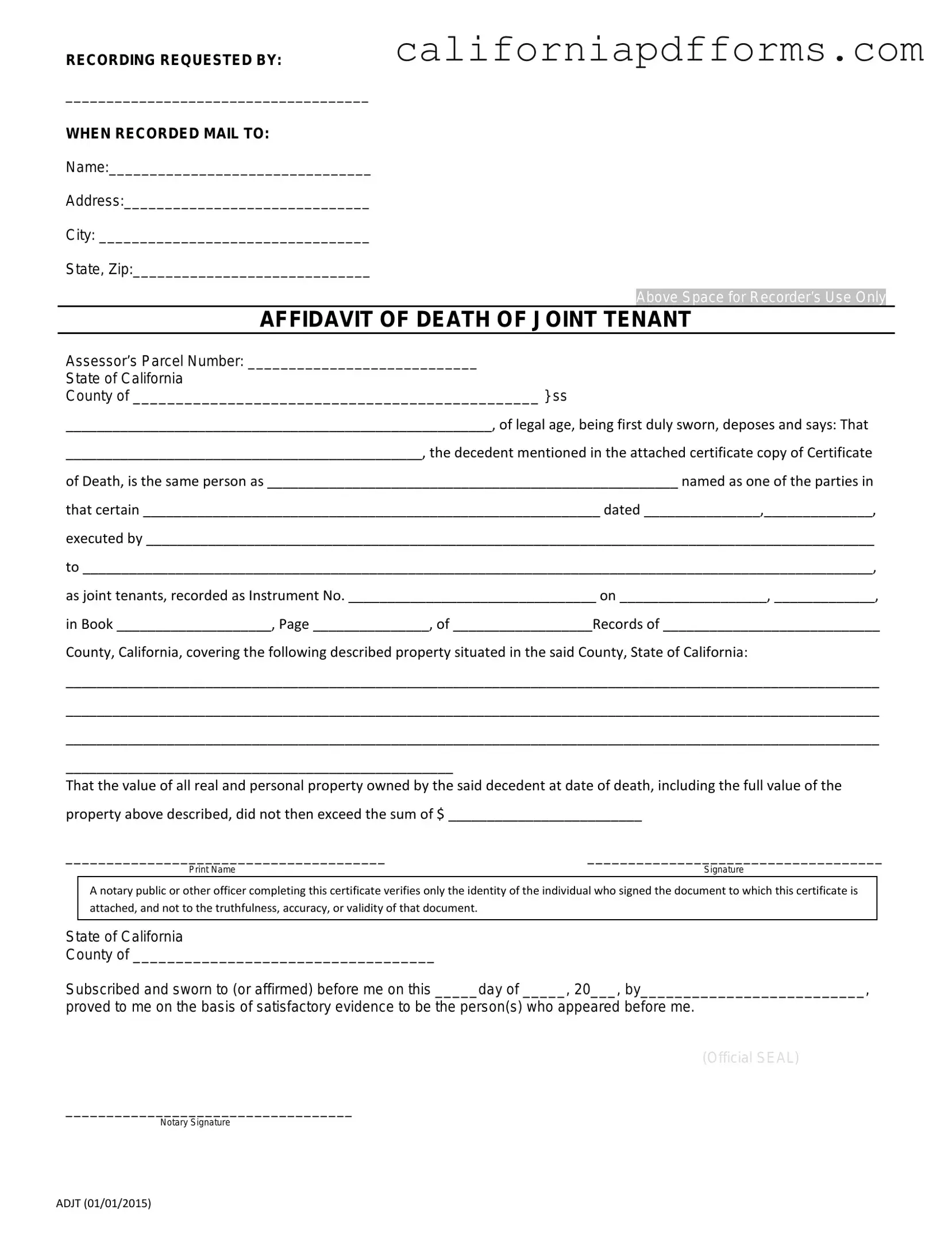Download California Death of a Joint Tenant Affidavit Form
The California Death of a Joint Tenant Affidavit form is a legal document used to transfer the deceased joint tenant's interest in property to the surviving joint tenant. This form simplifies the process of property ownership transfer and helps avoid lengthy probate proceedings. To ensure a smooth transition, consider filling out the form by clicking the button below.
Open Your Form Online
